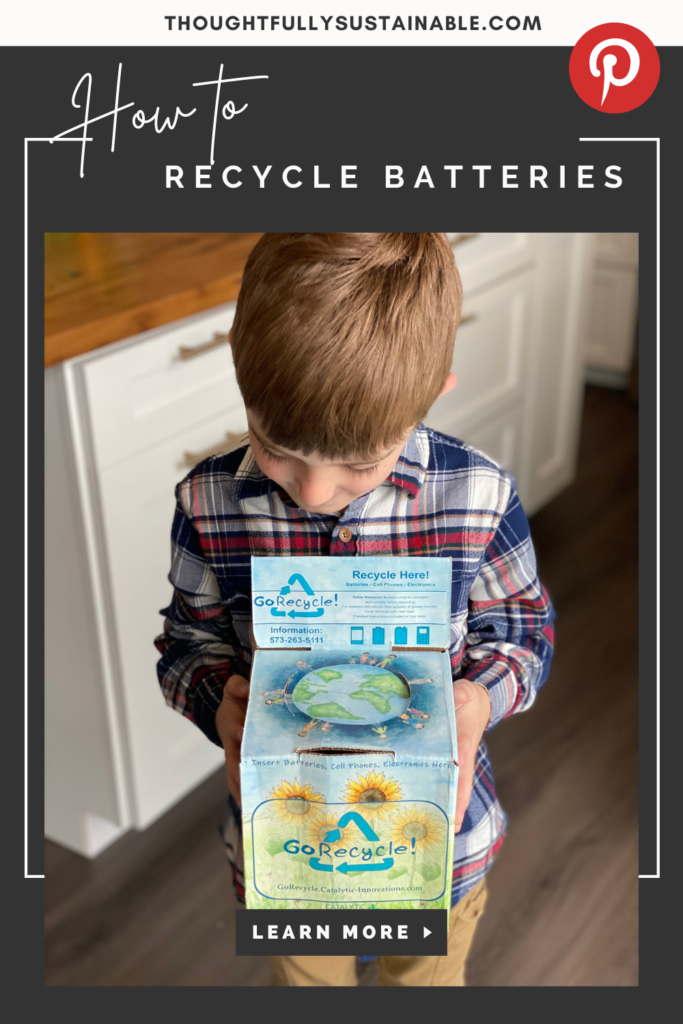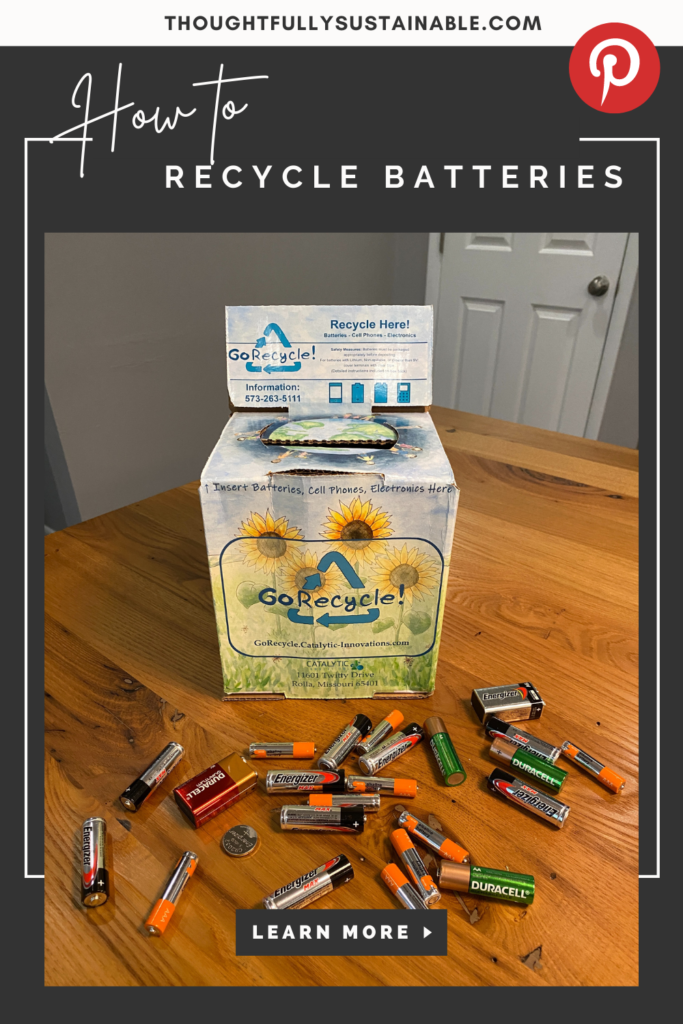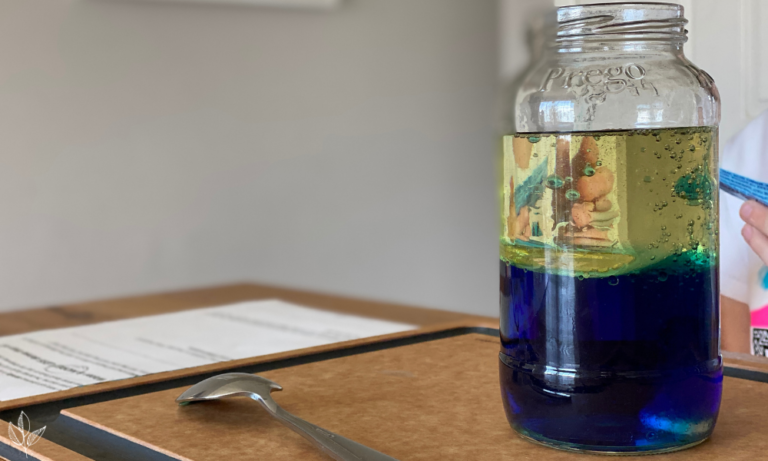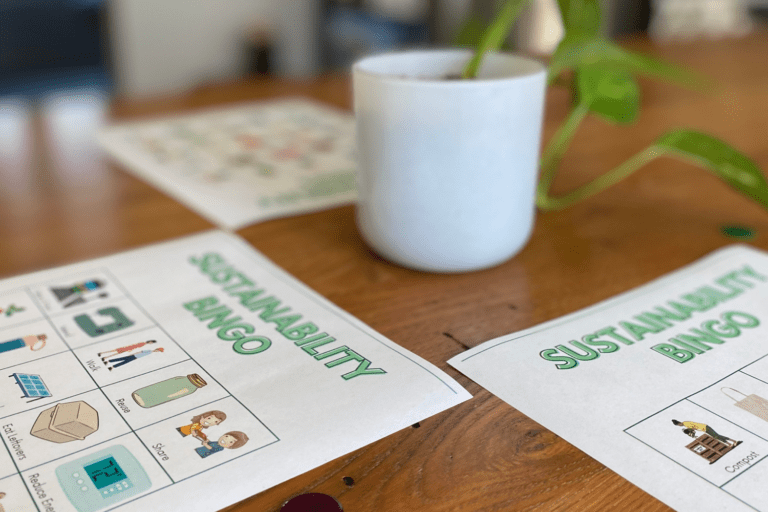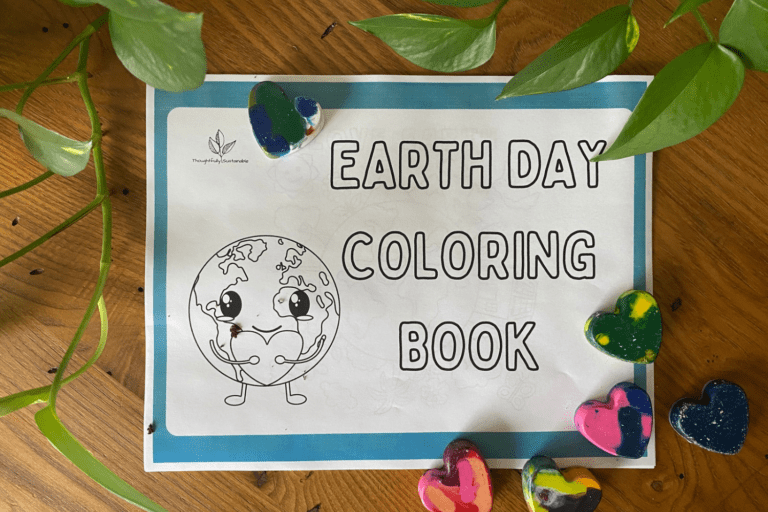How to Recycle Non-Rechargeable Batteries in the United States
Looking for a way to recycle your non-rechargeable, alkaline batteries AND sequester carbon dioxide from the atmosphere? Allow me to introduce you to a fantastic program based in the United States that does both!

Battery Recycling in the united States
In the United States, recycling batteries is a tricky thing. Many big companies offer a place to drop off your rechargeable batteries for recycling in their stores, but what about the non-rechargeable batteries?
Most resources will tell you to throw your non-rechargeable (or alkaline) batteries in the trash. These batteries contain heavy metals such as zinc, manganese and copper, that, when landfills fail, will leach into the groundwater, polluting the very water we depend on for drinking and growing our food.
Not to mention the negative environmental impacts of mining for these heavy metals to create new batteries. In the United States, 150,000 tons of alkaline batteries are produced in a year.
The few places that you may find that state they will recycle non-rechargeable batteries aren’t recycling the batteries themselves, but instead selling them to a broker, who then sells them to another broker, who eventually sells them to a true battery recycling company. Each transfer of sale involves physical transportation of these batteries, thus continuing to contribute to greenhouse gas emissions.
What if there was a way to collect and ship your non-rechargeable and rechargeable batteries directly to a battery recycling facility?
I’m thrilled to tell you that there is!
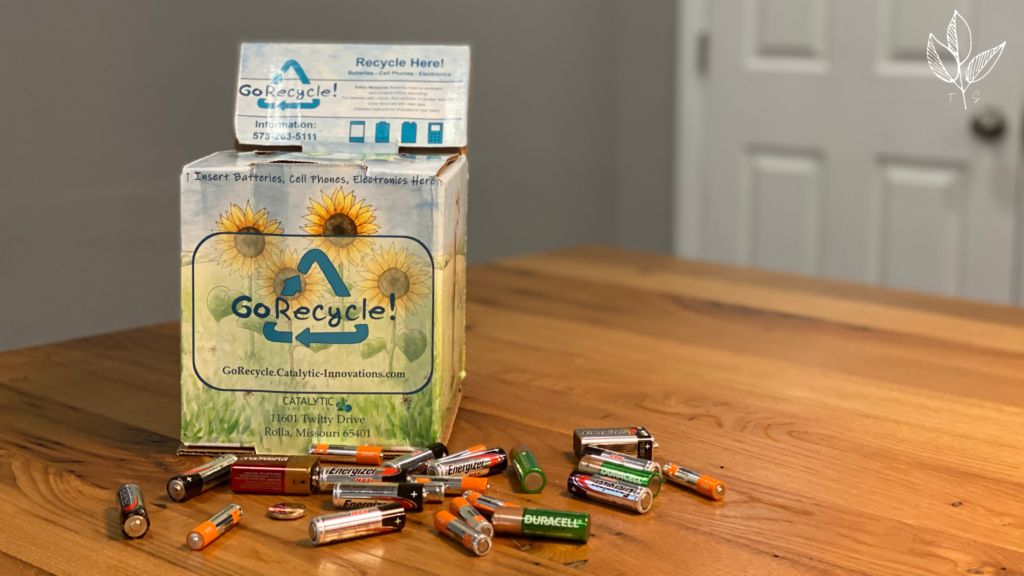

How to Recycle your Non-Rechargeable (and Rechargeable) Batteries
Allow me to introduce you to Catalytic Innovations, a Missouri based company that actually recycles your non-rechargeable batteries, as well as your rechargeable batteries! Staying true to the word recycle, they extract the heavy metals from the unwanted batteries and do one of two things:
- Sell the heavy metals to battery manufacturers to make more batteries.
- Create micronutrient fertilizers from the extracted zinc and manganese that’s designed to meet the needs of specific crops by rebalancing the soil chemistry of an area.
The only thing that can’t be recycled from the spent batteries is the thin plastic film that wraps around the battery. Everything else gets separated and reused!
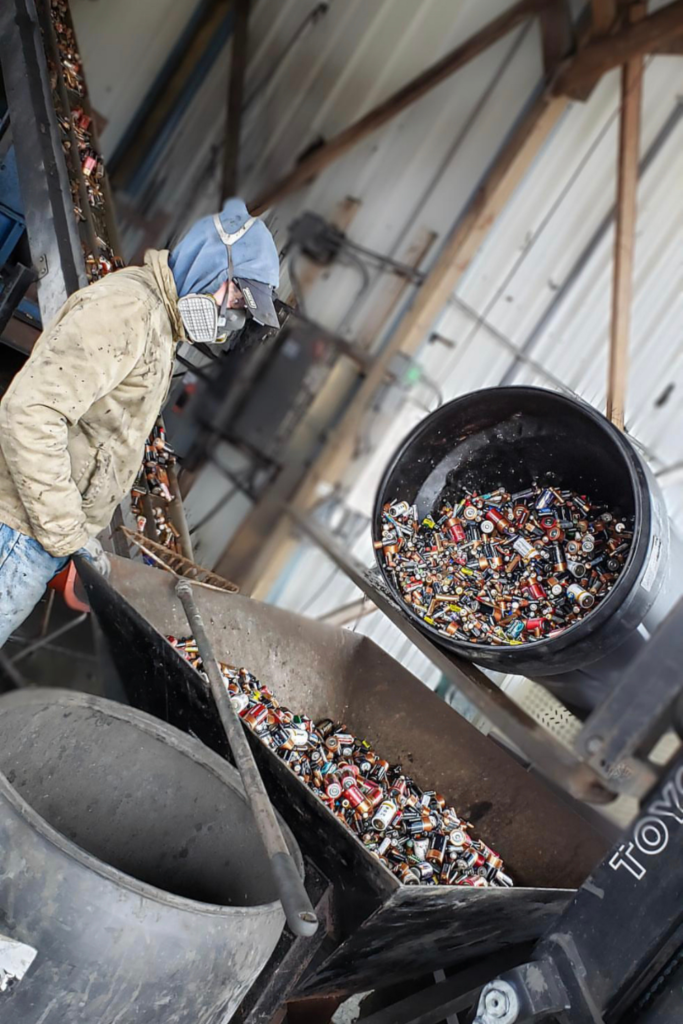

How Can Heavy Metals Be Extracted From Old Batteries?
Of course, my chemistry nerd self had to ask specifics on how they extracted the heavy metals from the batteries, but obviously that’s proprietary information!
They did share that in extracting the heavy metals and creating the metal carbonates (think zinc → zinc carbonate, manganese → manganese carbonate, etc), they need literally tons of carbon dioxide to make these compounds, which basically means that the process is a low-tech way of carbon sequestration! Drawing down carbon from the atmosphere is an essential component to tackling climate change.
Yes, you read that correctly. Recycling batteries and fighting climate change, all rolled in one. Not to mention creating a product from those recycled batteries that will provide specific plants with the essential micronutrients necessary for their growth. Now that’s the circular economy in action!


How to Get a GoRecycle Box.
By now you’re probably wondering, “This is amazing! But I don’t live in Missouri, so how can I recycle my batteries with Catalytic Innovations?”
Don’t worry – I got you. They have a nation-wide battery recycling program called GoRecycle, which is a mailable battery collection kit. GoRecycle allows you a convenient, lost cost way to recycle your batteries and electronics. The box is DOT permitted to ensure the safe and simple shipping of mixed batteries and fulfills are regulatory requirements. All you have to do is follow the simple instructions provided in the box to safely ship your used batteries to them!
So, how do you get your hands on one of these collection boxes?
It’s simple:
- Head to my GoRecycle page and choose the box size that’s right for you. You can opt for a one-time box purchase in either small or large, or an annual subscription, where you will receive a new box annually. If you plan to just collect the batteries you use at home, then a small box will probably be your best option. If you want a collection box for your classroom, local library or workplace, a large box may be a better choice.
- Once you select the box that fits your collection needs, you’ll receive the box in the mail with complete instructions on how to start collecting unwanted batteries.
- When your box has met its maximum capacity, follow the instructions provided to close, seal and return the GoRecycle box.
- Sleep well knowing that you have kept heavy metals from leaching into your waterways, prevented the mining of additional heavy metals for use in new batteries and sequestered carbon from the atmosphere!
If you click on the link to GoRecyle, you’ll see that they created a page specifically for me to share with you, which provides you with access to their collection service at a discounted rate!
Full disclosure: I do not make any profit or commission of any kind off of your purchase. The kind people at Catalytic Innovations simply gifted me with a small collection box in exchange for my honest review of their service. And, if you cannot tell from this post, I am beyond thrilled with their program!
If you have any questions about the GoRecycle! program or about anything I’ve mentioned above, please don’t hesitate to reach out! If I can’t answer your questions, I can direct you to someone who can!
